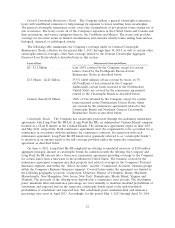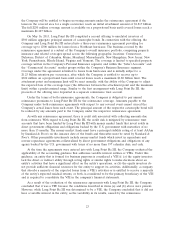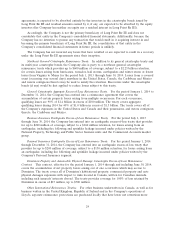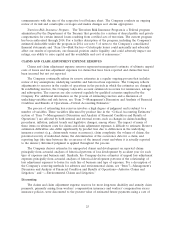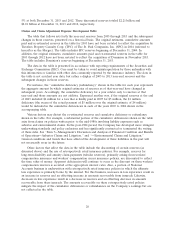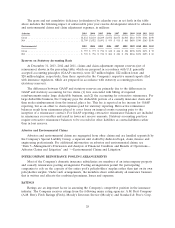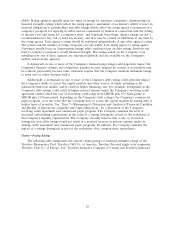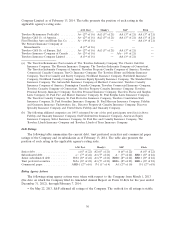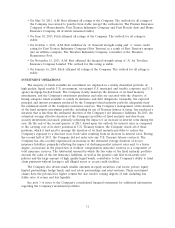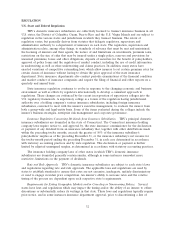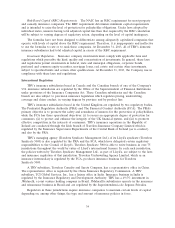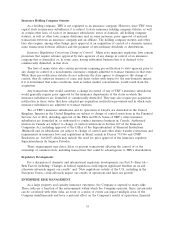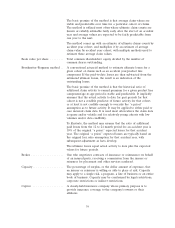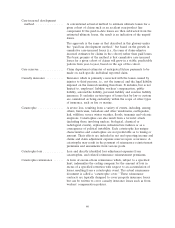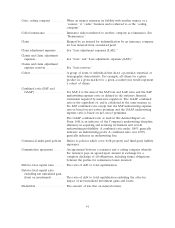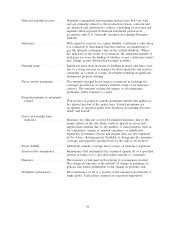Travelers 2013 Annual Report Download - page 42
Download and view the complete annual report
Please find page 42 of the 2013 Travelers annual report below. You can navigate through the pages in the report by either clicking on the pages listed below, or by using the keyword search tool below to find specific information within the annual report.REGULATION
U.S. State and Federal Regulation
TRV’s domestic insurance subsidiaries are collectively licensed to transact insurance business in all
U.S. states, the District of Columbia, Guam, Puerto Rico and the U.S. Virgin Islands and are subject to
regulation in the various states and jurisdictions in which they transact business. The extent of
regulation varies, but generally derives from statutes that delegate regulatory, supervisory and
administrative authority to a department of insurance in each state. The regulation, supervision and
administration relate, among other things, to standards of solvency that must be met and maintained,
the licensing of insurers and their agents, the nature of and limitations on investments, premium rates,
restrictions on the size of risks that may be insured under a single policy, reserves and provisions for
unearned premiums, losses and other obligations, deposits of securities for the benefit of policyholders,
approval of policy forms and the regulation of market conduct, including the use of credit information
in underwriting as well as other underwriting and claims practices. In addition, many states have
enacted variations of competitive ratemaking laws, which allow insurers to set certain premium rates for
certain classes of insurance without having to obtain the prior approval of the state insurance
department. State insurance departments also conduct periodic examinations of the financial condition
and market conduct of insurance companies and require the filing of financial and other reports on a
quarterly and annual basis.
State insurance regulation continues to evolve in response to the changing economic and business
environment as well as efforts by regulators internationally to develop a consistent approach to
regulations. These changes are evidenced by the recent incorporation of supervisory colleges into the
U.S. regulatory framework. A supervisory college is a forum of the regulators having jurisdictional
authority over a holding company’s various insurance subsidiaries, including foreign insurance
subsidiaries, convened to meet with the insurer’s executive management, to evaluate the insurer from
both a group-wide and legal-entity basis. Some of the items evaluated during the colleges include the
insurer’s business strategies, enterprise risk management and corporate governance.
Insurance Regulation Concerning Dividends from Insurance Subsidiaries. TRV’s principal domestic
insurance subsidiaries are domiciled in the state of Connecticut. The Connecticut insurance holding
company laws require notice to, and approval by, the state insurance commissioner for the declaration
or payment of any dividend from an insurance subsidiary that, together with other distributions made
within the preceding twelve months, exceeds the greater of 10% of the insurance subsidiary’s
policyholders’ surplus as of the preceding December 31, or the insurance subsidiary’s net income for
the twelve-month period ending the preceding December 31, in each case determined in accordance
with statutory accounting practices and by state regulation. This declaration or payment is further
limited by adjusted unassigned surplus, as determined in accordance with statutory accounting practices.
The insurance holding company laws of other states in which TRV’s domestic insurance
subsidiaries are domiciled generally contain similar, although in some instances somewhat more
restrictive, limitations on the payment of dividends.
Rate and Rule Approvals. TRV’s domestic insurance subsidiaries are subject to each state’s laws
and regulations regarding rate and rule approvals. The applicable laws and regulations are used by
states to establish standards to ensure that rates are not excessive, inadequate, unfairly discriminatory
or used to engage in unfair price competition. An insurer’s ability to increase rates and the relative
timing of the process are dependent upon each respective state’s requirements.
Requirements for Exiting Geographic Markets and/or Canceling or Nonrenewing Policies. Several
states have laws and regulations which may impact the timing and/or the ability of an insurer to either
discontinue or substantially reduce its writings in that state. These laws and regulations typically require
prior notice, and in some instances insurance department approval, prior to discontinuing a line of
32


